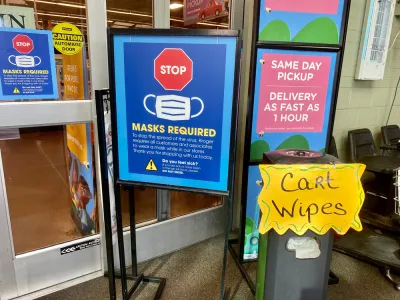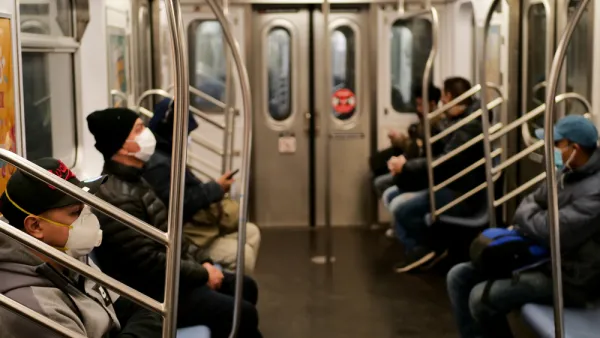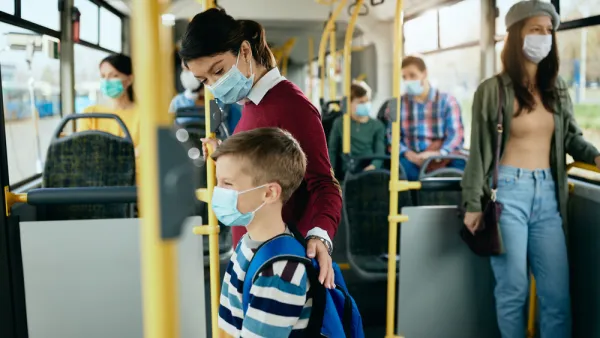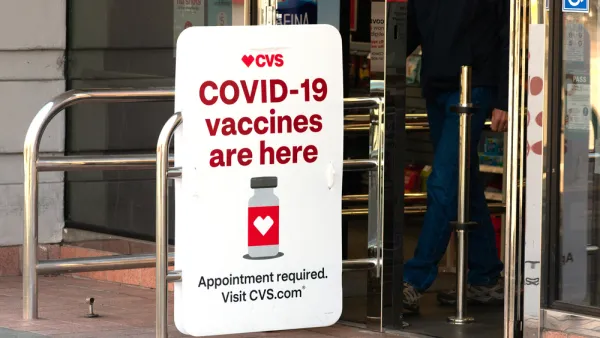President Joe Biden is calling on all Americans to wear masks for the next 100 days to mitigate the spread of the coronavirus, issuing two executive orders that require wearing masks on federal property and in domestic and international travel.

The emphasis on wearing masks marks one of the biggest differences with his predecessor who politicized and shunned them which undoubtedly contributed to increased COVID infections, now over 25 million; hospitalizations—over 110,000, and more than 420,000 deaths, according to The New York Times coronavirus tracker on Jan. 25.
"In the next few months, masks, not vaccinations, are the single best defense that we have against COVID-19," President Biden told the nation's mayors on Jan. 23 during the final full day of the United States Conference of Mayors’ 89th Winter Meeting held virtually.
"Medical experts say by wearing masks from now until April we will save more than 50,000 lives. We're asking the American people to mask-up for the first 100 days.
"I've issued an executive order requiring masks on federal property and interstate travel like trains, planes, and buses. I hope we can work together so you can require mask-wearing in your cities and social distancing."
"Together, the two orders come as close to a national mask mandate as his federal powers may allow, leaving it to states and municipalities to require residents to wear masks at a local level," report and William Wan for The Washington Post.
Masks represent the lowest-hanging fruit of public health measures that could put a dent in the outbreak, as science shows how dramatically they reduce transmission of the virus.
“It is, in some ways, our best medical tool,” said Ali Mokdad, an epidemiologist at the Institute for Health Metrics and Evaluation at the University of Washington. “It can save hundreds of thousands of lives without the need for surgery, drugs, no side effects and readily available to everyone.”
"Masks have become a partisan issue, unfortunately, but it's a patriotic act," stated Biden when signing the second of the two executive orders on Jan. 21 (see video attached to the source article).
"But for a few months, to wear a mask, [with] no vaccines; the fact is that they're the single best thing we can do. They're even more important than the vaccine because they take time to work...So I'm asking every American to mask up for the next 100 days."
Why not a real national mask mandate?
The two orders are a disappointment to those who hoped for an actual national mandate, similar to what 37 states plus D.C. and Puerto Rico have issued.
"Such a requirement would have been likely to be challenged in court by anti-mask activists, who have argued that only states and municipalities have the power to require residents to wear masks at a local level," add Wan and Laris in a follow-up FAQ piece on the two orders that includes enforcement, effective date, and outdoor federal properties.
Others, however, have argued that these are unprecedented times and that a national mask mandate would send a message and reflect the seriousness of the crisis.
Intrastate transportation?
Biden used the term, "interstate travel," in his aforementioned address to the nation's mayors, but that's not what his order states. Jeff Davis of the Eno Center for Transportation was surprised to see the inclusion of "all forms of public transportation as defined in section 5302 of title 49, United States Code" in the "Executive Order on Promoting COVID-19 Safety in Domestic and International Travel." Davis writes:
The presence of mass transit as item was a bit of a surprise. During the campaign, Biden’s promised mask mandate only applied to interstate transportation, which made sense, because that is the area where the federal government has general police power to regulate and to ensure public safety. Intrastate transportation, like most mass transit, is not an area where the federal government generally has regulatory power.
The mandates for the various modes must be issued by the appropriate agencies, including the Department of Transportation, the Federal Aviation Administration, and the Coast Guard. The order gives "agency leaders a week to brief Jeffrey Zients, coordinator of the White House’s coronavirus response, on their progress," add Wan and Larris.
Related in Planetizen:
-
Buses and Masks, January 11, 2021
-
Most Mayors Share Similar Priorities in Coronavirus Recovery, October 8, 2020
-
Can the Public Be Educated to Wear Masks? October 5, 2020
-
Is it a COVID Car or Mask-Optional Car? Rail Commuters Decide, September 28, 2020
-
Mask Mandates Without Enforcement Amount to Half-Measures, August 4, 2020
-
Rift Grows Between U.S. Conference of Mayors and the White House, January 25, 2018
FULL STORY: Biden signs order requiring masks on planes, buses, trains and at airports

National Parks Layoffs Will Cause Communities to Lose Billions
Thousands of essential park workers were laid off this week, just before the busy spring break season.

Retro-silient?: America’s First “Eco-burb,” The Woodlands Turns 50
A master-planned community north of Houston offers lessons on green infrastructure and resilient design, but falls short of its founder’s lofty affordability and walkability goals.

Delivering for America Plan Will Downgrade Mail Service in at Least 49.5 Percent of Zip Codes
Republican and Democrat lawmakers criticize the plan for its disproportionate negative impact on rural communities.

Test News Post 1
This is a summary

Test News Headline 46
Test for the image on the front page.

Balancing Bombs and Butterflies: How the National Guard Protects a Rare Species
The National Guard at Fort Indiantown Gap uses GIS technology and land management strategies to balance military training with conservation efforts, ensuring the survival of the rare eastern regal fritillary butterfly.
Urban Design for Planners 1: Software Tools
This six-course series explores essential urban design concepts using open source software and equips planners with the tools they need to participate fully in the urban design process.
Planning for Universal Design
Learn the tools for implementing Universal Design in planning regulations.
EMC Planning Group, Inc.
Planetizen
Planetizen
Mpact (formerly Rail~Volution)
Great Falls Development Authority, Inc.
HUDs Office of Policy Development and Research
NYU Wagner Graduate School of Public Service





























